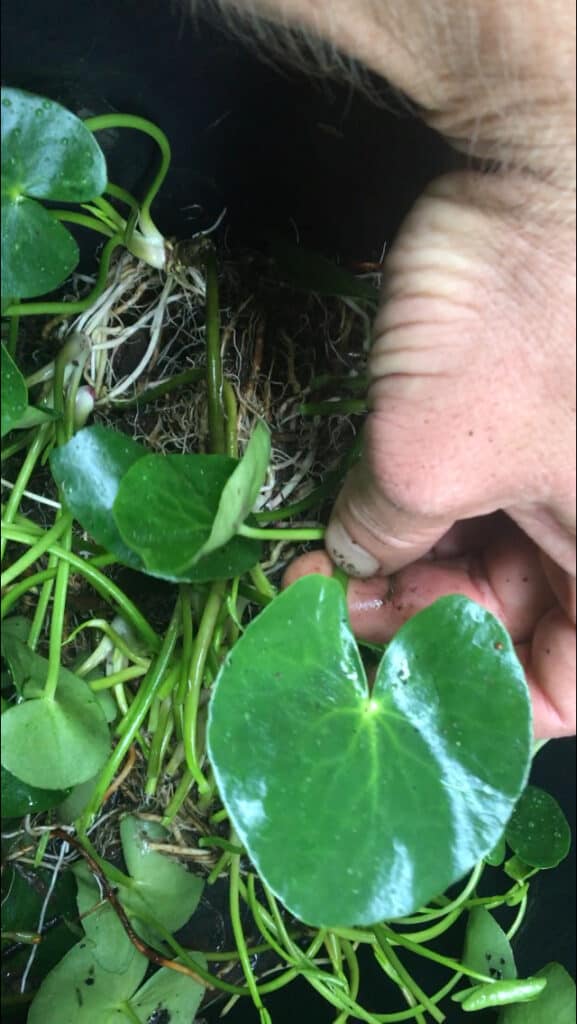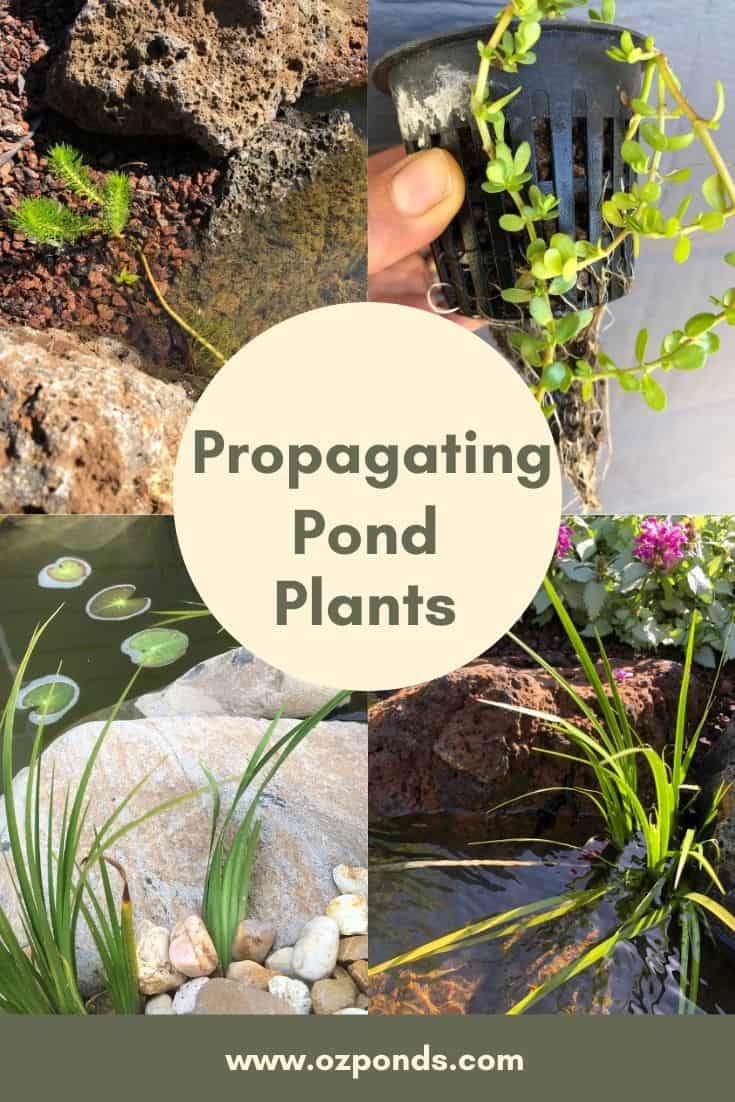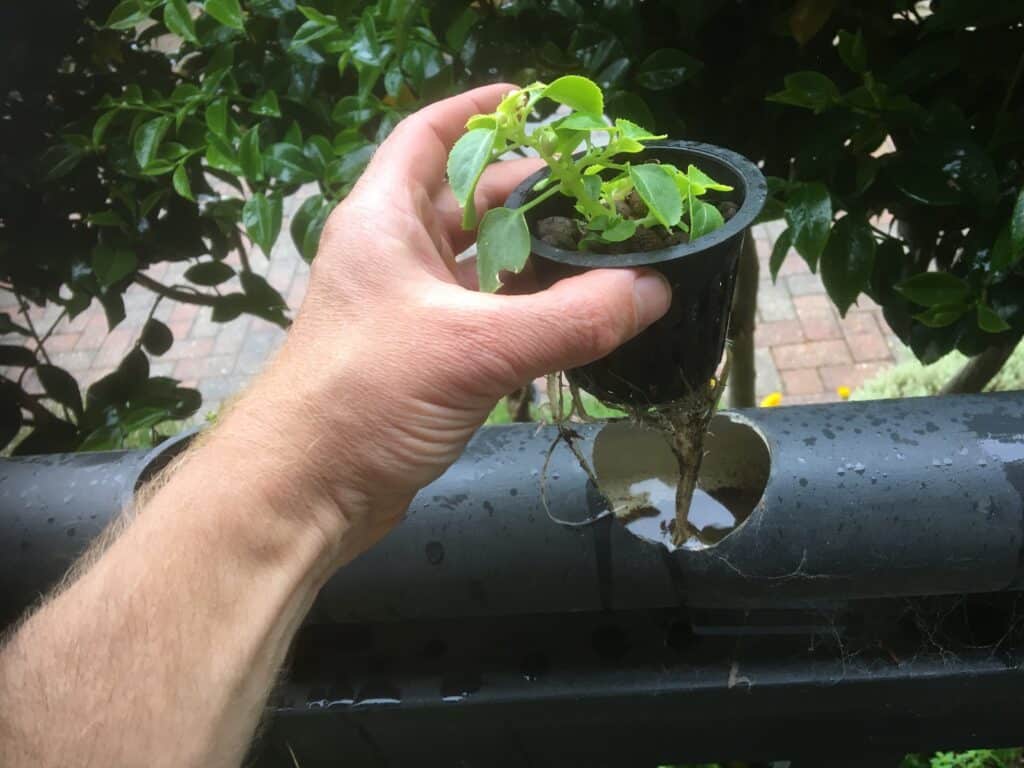For some reason pond plants are expensive!
Propagating pond plants is very, very easy. Producing your own supply of pond plants is fun and rewarding.
It can also be very beneficial. Plants you propagate yourself will be free of unwanted hitchhikers.
I’ve received unwanted snails and unwanted fish with pond plants I’ve purchased.
Before you propagate any pond plant make sure that it isn’t invasive. You don’t want to be responsible for helping spread an invasive species.
With all plants some are treasured in one jurisdiction and branded public enemy number one in other areas.
The 3 main ways to propagate pond plants are:
- Cuttings
- Division
- Seed
What method you need to use will depend on the plant. First let’s take a look at cuttings.
Cuttings
Most trailing and oxygenating pond plants can easily be grown by cuttings.
A cutting is just a small piece of stem. You will remove the lower 1/2 of foliage. This is where the roots will emerge.
Water plants are accustomed to growing in water and can be propagated in water. No need for professional equipment. Just a cutting and a glass of water.
I have been propagating the majority of my cuttings in small hydroponic pots, filled with some gravel.
I place the cutting in the pot, making sure the stem where the leaves have been removed will be submerged. Then I just fill in with some 7mm (1/4in) gravel.
Because they are in pots they are easier to share with friends and family, however it’s not a necessity.
You could place the cutting into the water at the edge of the pond.
I like to keep the original cutting small. I have found roots will develop much quicker that way.
A piece of stem around 7-10cm (3-4in) is perfect.
Some popular pond plants that are easy to propagate by cuttings:
- Bacopa
- Milfoil
- Creeping Jenny
- Ludwigia
- Mint
- Pennywort
Division
Propagating by division gives you instant plants with roots ready to go.
Basically any clumping plants can be propagated by division. In a pond setting think:
- Irises
- Carex
- Sweet flag
- Umbrella plant
- Elephant ears
- Canna lily
It’s not only grasses and climbing pond plants that can be easily propagated by division. Popular tubers can also be split apart.
- Water lilies
- Lotus
- Water hawthorn
Some pond plants multiply through runners. These can easily be pulled apart to plant in new ponds or in different areas of an existing pond.
- Water fringe
- Eel grass
- Water lettuce
Division is very straight forward. You simply remove a clump, section or tuber with some roots and you’ve got yourself a new plant.

Most tuber plants are best divided in winter when dormant. Water hawthorn is dormant in summer and can be divided then.
All the clumping plants are easiest to divide during the warmer months as you can see the leaves and stems. This just makes it easier to see that you are getting some stem or foliage with the root system.
Same goes for plants with runners. Break them off when they are actively growing.
Seed
Propagating water plants from seed is best done using something stable for the roots to grow into.
You can use potting soil, perlite, peat moss, sand, pea gravel, paper towel or cotton wool.
So long as it remains moist the seeds will germinate.
Any plant that flowers can be propagated by seed. But for many it’s just easier to use cuttings or division.
Propagation by seed is especially useful for people looking to create new variations of existing plants. For example cross pollinating different water lilies to create new and exciting colours.
Seed propagation is also useful in creating many hundreds of plants will minimal effort. Mostly marginal grasses, sedges and rushes.
This can be very useful for large farm protects and constructed wetlands.
To propagate water plants by seed you need to allow the flowers to naturally turn into seed heads.
You’ll know they are ready to be harvested when they dry off.
Then it’s just as simple as collecting them and sowing into your medium of choice. Sometimes it may be best to store the seed over winter and sow the following spring.
If you need to store seed keep it dry. I just use a brown paper bag, works every time provided the seed is already dried out.
Some popular pond plants that can be easily propagated by seed:
- Reeds and rushes
- Sedge
- Lotus
- Iris
- Canna
I hope you’ve found this article helpful.
You might like to join my mailing list where I share helpful tips and tricks to save money on your pond.
From time to time I also get special deals on pond equipment. If this interest you click the link below.
Thanks for reading 🙂




